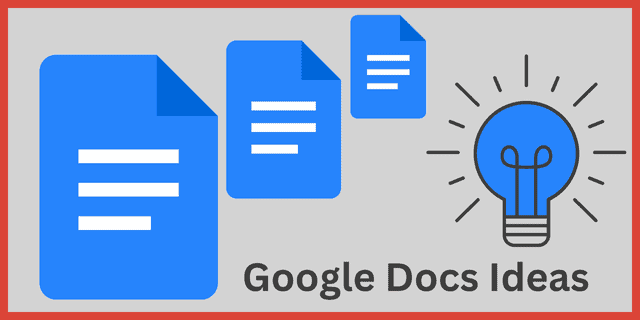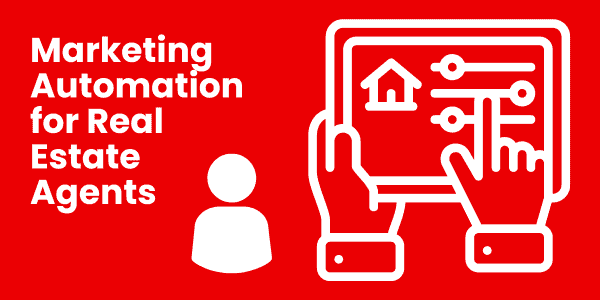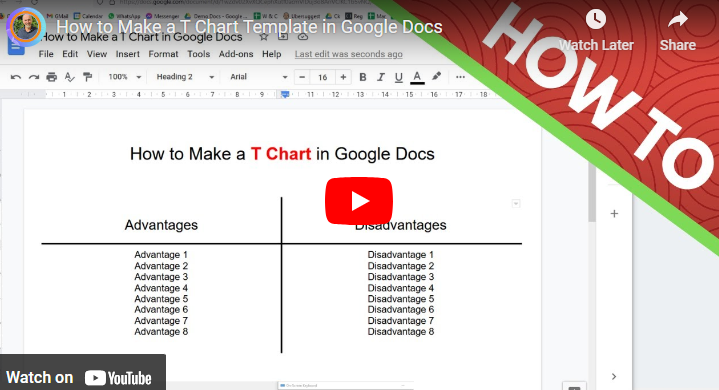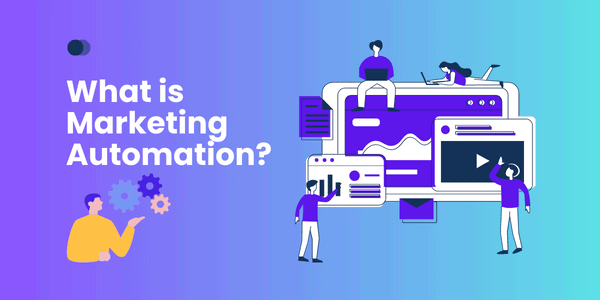How to Automate Cold Outreach Sales: Boost Efficiency
If you want to master the art of automating cold outreach sales, this is your destination. Cold email outreach is a proven marketing technique that can generate leads and increase sales when done correctly. However, it’s also time-consuming and requires consistent effort.
In this blog post, we will explore five effective ways to automate your cold outreach process while maintaining personalization and increasing conversion rates. From leveraging AI technology for smarter targeting to tracking performance with automation tools, these strategies are designed for entrepreneurs, online marketers, and sales professionals who want an edge in their campaigns.
By mastering how to automate cold outreach sales using these techniques, you’ll be able to scale your efforts efficiently without sacrificing quality or results.
Table of Contents:
- Maximize Efficiency with Automated Cold Outreach
- Personalize Your Messages for Maximum Impact
- Automate Follow-Ups for Increased Conversion Rates
- Track Performance with Automation Tools
- Leverage AI Technology for Smarter Cold Outreach
- Frequently Asked Questions How to Automate Cold Outreach Sales
- Conclusion
1. Maximize Efficiency with Automated Cold Outreach
Time is of the essence in today’s competitive business environment, so automating your cold outreach process can help you maximize efficiency and achieve great results with minimal effort. That’s why automating your cold outreach process can be a game-changer for entrepreneurs and online marketers alike. By utilizing automation software, you can make your workflow more efficient and conserve valuable time while still getting excellent outcomes.
A. Choose the Right Automation Tool
There are numerous cold email software options available in the market that cater to different needs and budgets. When selecting an automation tool for your cold outreach sales efforts, consider factors such as ease of use, integration capabilities with other platforms like CRM systems or social media networks, scalability, pricing plans and customer support.
B. Create Templates for Consistency
An essential aspect of maximizing efficiency through automation is creating templates for your emails or messages that maintain consistency across all communications without compromising personalization (more on this later). This not only saves time but also ensures brand uniformity throughout every interaction with potential leads.
- Email Subject Line: Craft compelling subject lines that grab attention while remaining concise.
- Email Body: Develop a clear structure within the body text to convey information effectively – introduction, value proposition or offer details followed by call-to-action (CTA).
- Email Signature: Include relevant contact information in a professional-looking signature to establish credibility.
C. Schedule Your Campaigns Strategically
To further optimize efficiency when automating cold outreach sales campaigns, it is crucial to schedule them strategically based on factors such as target audience demographics or timezone differences, if applicable. Research has shown that sending emails during specific times of the day or week can yield better open and response rates, so make sure to plan accordingly.
By implementing these steps in your cold outreach sales strategy, you’ll be well on your way to maximizing efficiency through automation while still achieving impressive results.
By automating your cold outreach, you can maximize efficiency and free up more time to focus on other aspects of your business. Personalizing messages for maximum impact is the next step in ensuring success with automated cold outreach sales.
2. Personalize Your Messages for Maximum Impact
In today’s competitive market, personalization is key to standing out and making a lasting impression on your prospects. While automation can save you time and effort, it’s essential not to sacrifice the human touch in your cold outreach messages. Explore how to add a personal touch to your cold outreach messages while still maintaining efficiency.
A. Research Your Prospects
Before crafting personalized messages, take some time to research your prospects and gather relevant information about them. This could include their job title, company size or industry, recent news or events related to their business or even common connections on social media platforms like LinkedIn. By understanding more about each prospect, you’ll be better equipped to tailor your messaging accordingly.
B. Use Dynamic Content in Templates
Create email templates that incorporate dynamic content placeholders (also known as merge tags) for easy customization with each recipient’s details. These placeholders allow you to automatically insert specific information from a contact list into the body of an email message while still maintaining a consistent structure across all emails sent through automation tools like Mailchimp Automation.
- Name: Always address recipients by their first name whenever possible.
- Company Name: Mentioning the prospect’s company name shows that you have done some homework before reaching out.
- Pain Points: If applicable, reference pain points specific to their industry or role which may resonate with them personally.
- Social Proof: Share success stories from similar clients within their niche as evidence of how well-suited your product or service is for their needs.
C. Test and Optimize Personalization Strategies
Continuously monitor the performance of your personalized messages by tracking open rates, click-through rates, and conversion metrics using automation tools like HubSpot Email Marketing. Use this data to identify which personalization tactics are most effective and make adjustments as needed to improve overall campaign results.
By striking a balance between personalization and efficiency in your cold outreach sales efforts, you can create compelling messages that resonate with prospects while still reaping the time-saving benefits of automation.
Customizing your communication can create a memorable effect and raise the likelihood of getting results. Automating follow-ups is an effective way to ensure that no lead falls through the cracks, so let’s explore how to do it right.
3. Automate Follow-Ups for Increased Conversion Rates
Automating follow-ups is a game-changer for maximizing the return on your cold outreach efforts. It not only saves time but also ensures that no potential lead slips through the cracks due to missed or delayed follow-up messages. In this section, we’ll discuss how automating follow-ups can help you increase conversion rates and explore some tools and strategies to make it happen.
Achieve Consistency with Automated Follow-Up Scheduling
Consistency is key in any sales process, especially when following up with prospects after an initial contact. By automating your follow-up schedule, you ensure that each prospect receives timely and relevant communication without fail. This helps build trust and rapport while keeping your brand top-of-mind for potential clients.
Create a Follow-Up Sequence
- Determine the ideal frequency: Identify how often you should be reaching out to leads based on factors such as industry norms, response rates, and previous experiences.
- Craft compelling content: Write engaging emails that provide value-add information or resources related to their needs or interests.
- Add personalization elements: Include personalized details like the recipient’s name or company-specific references using merge tags provided by most email automation platforms (e.g., Mailchimp).
- Schedule automated delivery: Set up an email sequence within your chosen platform so that messages are sent at predetermined intervals after specific triggers (e.g., opening of initial email).
Increase Response Rates with Automated Reminders
No matter the quality of your first message, it is possible that it could be lost in a person’s inbox or neglected due to their hectic timetable. By automating reminders, you can gently nudge prospects who haven’t responded yet without having to keep track of each lead manually.
For example, if a prospect doesn’t respond within a week after your initial email, an automated reminder could be sent asking if they had any questions or concerns about the information provided. This not only shows persistence but also demonstrates that you’re genuinely interested in helping them solve their problems.
Track and Optimize Your Follow-Up Strategy
An essential aspect of automating follow-ups is tracking performance metrics such as open rates, click-through rates (CTR), and conversion rates. This data allows you to identify which messages are resonating with your audience and make adjustments accordingly for better results.
There are various email automation tools available that provide detailed analytics on your campaigns’ performance. Use this information to optimize subject lines, content quality, personalization elements, and delivery times for maximum impact.
Incorporating automation into your cold outreach follow-up strategy is an effective way to save time while increasing conversion rates. With consistent messaging schedules, timely reminders for unresponsive leads, and ongoing optimization based on performance data – you’ll be well-equipped to maximize the return on investment from every cold outreach campaign.
By automating follow-ups, you can ensure that your leads don’t fall through the cracks and improve conversion rates. With automation tools, you can easily track performance to see which strategies are working best for your business.
4. Track Performance with Automation Tools
Keeping track of your cold outreach campaign’s performance is crucial for optimizing your efforts and maximizing results. By utilizing automation tools, you can easily monitor key metrics and make data-driven decisions to improve your sales process. To ensure you remain ahead of the curve, let’s take a look at some popular automation tools.
a) Customer Relationship Management (CRM) Software
Customer Relationship Management (CRM) software is an essential tool for managing leads and tracking the progress of your cold outreach campaigns. CRM solutions such as Salesforce, HubSpot and Zoho provide a way to store contact data, keep tabs on interactions with leads, set up reminders for follow-ups and generate reports regarding various elements of the sales process.
b) Email Tracking Tools
Email tracking tools enable you to gain insights into how recipients interact with your emails by providing data such as open rates, click-through rates (CTR), replies received etc., which are vital in evaluating the effectiveness of a campaign. Some popular email tracking solutions include Yesware, Mailtrack, and Mixmax.
c) Analytics Dashboards
Analytics dashboards provide a visual representation of all relevant metrics related to cold outreach campaigns in one place so that it becomes easier for marketers to identify trends and areas requiring improvement quickly. Platforms like Google Data Studio or Databox offer customizable analytics dashboards that integrate seamlessly with other marketing tools used in your sales process.
d) A/B Testing Tools
Optimizing the messaging and design of your cold outreach emails is essential for improving conversion rates. A/B testing tools allow you to experiment with different email variations, such as subject lines or call-to-action (CTA) buttons, and measure their performance against each other. This helps in identifying which version resonates better with your audience. Some popular A/B testing tools include Optimizely, VWO, and Google Optimize.
- CRM Software: Salesforce, HubSpot, Zoho
- Email Tracking Tools: Yesware, Mailtrack, Mixmax
- Analytics Dashboards: Google Data Studio, Databox
- A/B Testing Tools: Optimizely, VWO, Google Optimize
Incorporating these automation tools into your cold outreach strategy will not only save time but also provide valuable insights that can be used to refine and optimize future campaigns. By continuously tracking performance metrics and making data-driven decisions based on those insights; you’ll be well-equipped to improve overall results from your automated cold outreach efforts.
Tracking performance with automation tools can be a powerful way to optimize your sales process and maximize efficiency. Leveraging AI technology for smarter cold outreach is the next step in optimizing this process even further.
5. Leverage AI Technology for Smarter Cold Outreach
In today’s competitive business landscape, leveraging the power of AI technology can give you a significant edge in your cold outreach efforts. By incorporating artificial intelligence into your sales and marketing strategies, you can make smarter decisions, improve personalization, and ultimately achieve better results.
A. Improve Personalization with AI-driven Insights
Salesforce Einstein, an AI-powered CRM platform, is one example of how businesses are using machine learning to enhance their cold outreach campaigns. This tool analyzes data from various sources such as social media profiles and past interactions, to create personalized messages that resonate with prospects on a deeper level.
- Data analysis: Identify patterns in prospect behaviour to tailor messaging accordingly.
- Sentiment analysis: Gauge the tone of previous communications to determine the best approach for future conversations.
- Predictive analytics: Anticipate prospect needs based on historical data and current trends.
B. Automate Lead Scoring with Machine Learning Algorithms
The process of lead scoring helps prioritize leads by assigning values based on factors like engagement levels or likelihood to convert. With machine learning algorithms like those found in platforms such as HubSpot Marketing Hub, this process becomes more accurate over time as it learns from new data points gathered through ongoing interactions between prospects and your brand.
C. Optimize Email Timing Using Predictive Analytics
Finding the perfect time to send an email can significantly impact open and response rates. AI-powered tools like Seventh Sense use predictive analytics to determine the optimal sending times for each prospect, increasing the likelihood of your message being read and engaged with.
D. Enhance Email Content with Natural Language Processing (NLP)
NLP is an area of AI that focuses on interpreting human language. By incorporating NLP into your cold outreach strategy, you can create more engaging content that appeals to prospects’ emotions and preferences. Tools like Phrasee utilize NLP technology to generate high-performing subject lines or email copy tailored to your audience.
Incorporating AI technology into your cold outreach campaigns not only saves time but also helps you make smarter decisions based on data-driven insights. By embracing these cutting-edge tools, you’ll be well-equipped to improve personalization, optimize lead scoring, enhance email timing, and create compelling content that resonates with potential customers.
Frequently Asked Questions How to Automate Cold Outreach Sales
How do you automate cold outreach?
To automate cold outreach, use email automation tools like Mailshake, Woodpecker, or Reply.io. These platforms help you create personalized email campaigns, schedule follow-ups, and track performance. Additionally, integrate CRM systems like Salesforce or HubSpot to manage leads and maintain a centralized database.
How do you automate sales outreach?
Automate sales outreach by leveraging tools such as Outreach.io, SalesLoft, or Yesware. These platforms enable automated scheduling of emails, calls, social media messages, and more. Connect them with your CRM system for seamless lead management and tracking of engagement metrics to optimize your sales process.
Can you automate cold emails?
A good conversion rate for cold outreach varies depending on the industry and target audience. However, a benchmark to aim for is between 1% and 5%. To improve your conversion rates, focus on personalizing messages, optimizing subject lines, and conducting A/B testing with different email templates or content.
Conclusion
Automating cold outreach sales can help entrepreneurs and online marketers maximize their efficiency, personalize messages for maximum impact, automate follow-ups for increased conversion rates, track performance with automation tools, and leverage AI technology for smarter cold outreach. By implementing these strategies, businesses can save time while increasing the effectiveness of their outreach efforts.






